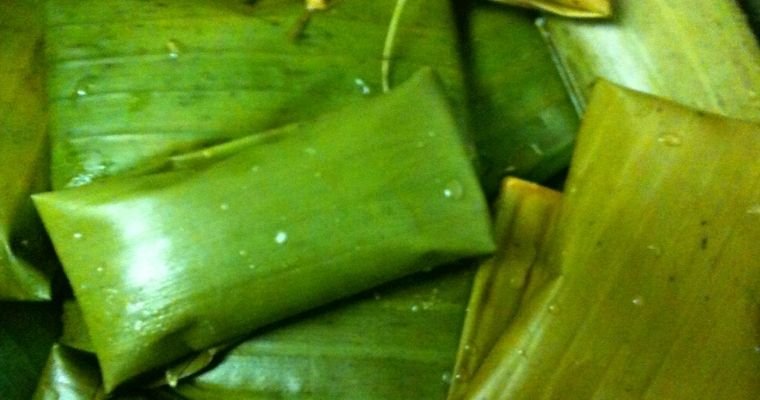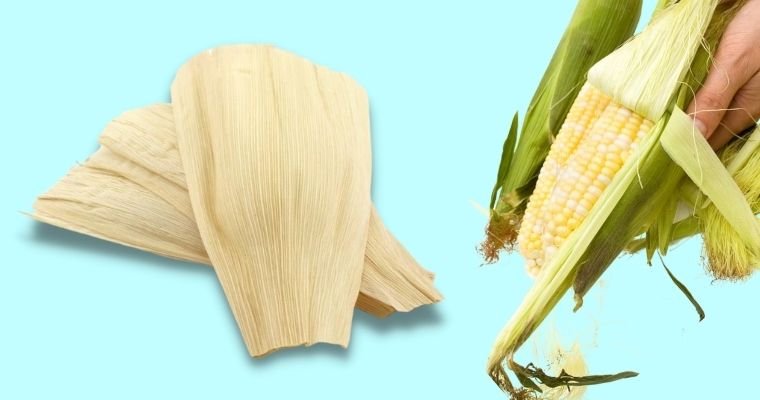Last Updated on April 18, 2022
How to make tamales
How to cook tamales (Video):
How to reheat tamales
A cooking skill of a housewife not only depends on how well she can cook but also on how cleverly she can manage the leftover. It is truly a nightmare when you open your refrigerator and see nothing but your remains from last night. However, you can change defeat into victory by using some simple tips and making everything great again.
In this article, I will show you some ways to reheat tamales – a traditional Mexican food. You can also apply these methods to other food since they are quite similar.
Best way to reheat tamales
- Reheat Tamales using a Stove
- Reheat Tamales using Microwave
- Reheat Tamales using an Oven
How to heat up/warm up/cook frozen tamales
1. Reheat Tamales using a Stove
You will need:
- A steamer rack: this will prevent your tamales from interacting with boiling water so that they won’t be too soft to eat. Some steamers are already equipped with this rack as a separable tray.
- A thermometer: this measuring device helps us a lot in determining the right temperature for our food, especially with leftovers. Some bacteria which carry germs and other digestive problems are only inactive once reaching a definite heat.
How to do
1 – Prepare your tamales.
– If your leftover tamales are frozen, you need to thaw them in the cooling compartment of the refrigerator. It would take you around one day. Alternatively, tamales can be put into the microwave under the defrost setting for only 1 hour. Remember to place a moist towel under the tamales after thawing them for the first 60 seconds.
– Any wrappings or aluminum foils should be taken off before reheating because they may lead to unwanted melting and other burns inside the microwave.
2- Heat the Water
– Fill your pot with a couple of water ( around 4 cups of water is enough), set the steamer to medium-high, and bring your water to a boiling state.
3 – Arrange and Heat all up:
– Use your boiler and stack all prepared tamales onto it.
– Do not lay tamales back down on either side. The best position is tamales standing up with the open end facing your lid. ( with 1-inch spaces between each tamale)
– Adjust the heat to medium-low and cover the boiler with a large lid.
– Avoid taking off the lid many times as heat will be lost during the process and lead to a longer time than expected.
4- Temperature Checking
– After around 15 minutes, you can use a thermometer to determine the tamales’ temperature.
– Within the thickest part, the most suitable temperature is 165 degrees F.
– Place the tamales back onto the rack in case they are below the standard temperature and continue heating for 3-5 minutes more.
– Make sure to keep it around 165. You can check the steamer several times by using the same method.
– Remember to change another lid or use a clean handkerchief to dry out all the steam before placing the lid back on your tamales.
5- Ready to serve
– Use tongs or chopsticks to take out all your tamales from the pot. Waiting till they are cool down and ready to enjoy.
2. Reheat Tamales using a Microwave
If you don’t have a stove, you can use a microwave as a replacement. However, tamales usually appear with hot spots after being reheated in the microwave. In addition, some ingredients inside your tamales won’t keep the same taste as before and have a tendency to be dry and troubled.
So I still go with the stove as the best choice and consider the microwave as a backup.
You will need:
- A microwave-safe plate: You won’t want your dish covered with melted foil or plastic. These safe plates, which are all made of glass or highly heat-resistant plastic, make sure that your food will have the best flavor and won’t cause any unintended incidents.
- Moist paper towel: Use any clean paper you have and spray them with about 3 tablespoons of water until they are damp enough. This towel will release steam as heated by the microwave, which preserves the tamales’ flavor.
How to do:
1 – Prepare the Tamales
– Take out all your remaining tamales and place them evenly on the microwave disk. The distance between each tamale should be around 1 inch so that the heat can warm them up thoroughly.
– Place a damp towel over tamales to keep them moist and soft.
2- Set your Microwave and Start Heating
– Put the plate of tamales onto the turntable of the microwave for 15 seconds under full-power mode.
– Take notice of your tamales through the glass of the microwaves while heating.
– After 15 seconds, you should remove the towel, turn your tamales over and repeat those above steps again: place a newly damp paper onto your food and put them all into the microwave for another 15 seconds.
3-Temperature Checking
– After 30 seconds of waiting, now you can open the microwave and take out your tamales for checking.
– Remove the unnecessary paper wrapped around your food and put it in a thermometer to determine the internal heat. 165 degrees F is the most suitable temperature for leftovers to prevent bacteria and other digestive germs.
– If your tamales haven’t reached that target, place them back into the microwave and heat them for around 15 seconds more.
4- Check your finished Tamales:
– As I said above, the microwave usually leaves hot/ cold spots unevenly through your tamales. You should check carefully using your finger running along with your food.
– If this event does appear in your tamales, place them back into the microwave and reheat them all again. Small pieces of tamales can be heated more efficiently, so you can cut them into halves for the best result.
3. Reheat Tamales using an Oven
 You will need:
You will need:
- Aluminum foil: I recommend using plain foil or foil, which is not made from plastic.
- Oven-safe platter: you should buy a cast iron, stoneware, metal, or glass platter. Be careful with cast-iron or stoneware ones because they may cause stickiness to your tamales.
How to do:
1 – Prepare your Tamales
– Use the foil to wrap around each tamale two or three times.
– Remember to wrap your food one by one to gain the best result.
– Fold or squeeze 2 ends of the foil and make sure all the air is released out of the packet.
– Place tamales onto the platter. You should only have 1 layer of tamales for each platter. If you have too many tamales, you need a larger one or more platters.
– And, of course, don’t let tamales interfere with each other.
2 – Heat all up:
– Prepare your oven at 325 degrees F before cooking the tamales.
– Place the platters in your oven and cook them for around 20 minutes.
– Remember to take out your platters and turn over your tamales so that oven can deliver heat thoroughly.
3 – Temperature Checking
– Take your tamales out, take off one of the tamales’ foil and use the thermometer to test the internal heat.
– As usual, 165 degrees F is the target we want for our food. If they haven’t had that temperature, turn them back to their foil and reheat in the oven for another 5 minutes.
Some small tricks:
1 – Trick with corn husks:
– All of the reheating methods above can be much more efficient with some corn husks because they help your food stay together and keep them away from splashing during the process.
– Fresh corn husks can improve the taste of tamales. They are also easy to discard as normal trash.
2– Trick with Frozen Tamales:
– Surprise, you can reheat your tamales without waiting till they are all thawed. However, this would take you 10 minutes longer than normal reheating. And there is one more risk that tamales won’t be heated evenly as from a normal state and might get drier than we want.
– You should only use this method as the last resort as you are too busy to thaw tamales or be in a quick time cooking.
3 – Trick with Fried Tamales:
– Some people are interested in tamales with a crispy texture. This trick will help you get their point. After reheating tamales, as usual, put them in the pan and fry them till the outer layer turns orange.
– However, you should use many towels to decrease the oil in fried tamales after the process since they are quite oversaturated with each other.
I hope you have an enjoyable meal with your family. Now you know the best solution to renew all your leftovers.
How to steam tamales
How long to steam tamales
How to eat a tamale
Cooking a great dish is a struggling process, but how to serve that dish well also creates big problems. The appearance of your dish is dependent on your expectation. Tamales can give you flexible choices in displaying, so just free yourself. Sometimes crazy ideas can give out unexpected results.
We will give you some recommendations about some accompanies that work well for tamales and some tips for your decoration.
What will you need to serve with tamales?
– Use corn husks or banana leaves for plating:

+ These leaves and husks are catalysts in your tamales cooking process, so why don’t we use them for decoration too? We can reuse them quite many times because of their stoutness. They’re also extremely environmentally friendly, and you can just simply throw them into the garbage bin without worrying about their effect.
+ Use leaves/ husks which haven’t been steamed, plate them under your tamales, and your diners will surprise you with your creativity. This will help you on those days that you are too lazy to decorate anything and just want to throw your tamales all on the plates.
– Use Sauce Bowl/ Disk:
Tamales would taste best when being served with certain sauces. Thus you should prepare some small bows or disks for saucing. A set of small ones would work best because some diners will want to try many sauces at a time.
– Side Dishes:
Obviously, some mashed potatoes and steamed broccoli aren’t going to work if you want an authentic Mexican tamale disk. You should give it a try with some rice, beans, and chilies. The beans here can be refried to satisfy your traditional stomach. Side dishes can vary from place to place. As long as you taste good, it’s all up to you.
– Add in some Fillings:
Some fillings are necessary when you want to add extra experience to your diners’ journey. Shredded pork (should be some pork butt in traditional American style) or chicken seem to be the two most popular options.
Another alternative is beef. You can also consider spinach and cheese for vegetarians. Some salsa can also be flexibly used as fillings, too. However, you should be careful because some over- wet filler can ruin all your tamales.
– Sauce is the most important part that we can’t ignore.
Though Mexican doesn’t use sauce when they eat tamales, sauces can be the game-changers. Some combination would be really good that your diners will never forget your tamales.
Mole sauce: a mole contains chilies and chocolate. This kind of sauce is so popular in Mexico that it even overwhelms tamales.
Mole Verde: the main ingredients are pumpkin seeds and green chilies. Other ingredients may be some green tomatoes, radish leaves, lettuce, garlic, and so on. This one is served with chicken or pork and can be accompanied by red or white rice or beans.
Americanized pumpkin mole: Chicken tamales can make you surprised when being served with this pumpkin filling. If you don’t want to be too risky with this creamy pumpkin one, a plain chili sauce is also great.
Green Tomatillo Salsa: This can be a surprising choice for tamales. Just use a bit of tomatillo, green chilies, and fresh cilantro then you can have nice company.
Cream: This creamy white sauce can be interesting if you are eager for some different tastes. American sour cream is a good replacement instead of a Mexican one if you don’t have a chance to get the authentic cream. The suitable catalysts can be some lime juice, cilantro, and a clove of garlic.
Prepare your tamales for serving in Steps
1 – Nobody wants Raw Tamales:
The first step before any serving is, of course, the cooking. It’s easy for everyone to have delicious tamales.
– Lay some husks or banana leaves over your rack, then place your tamales over them. Some masa dough can be helpful if you spread them evenly around the inside of the husks. You should add 1 or 2 spoons of masa over your filling to increase the flavor. Wrap up all and heat up your steamer for 1-2 hours.
– Remember not to let water touch the tamales, or it can ruin all your disk. You should repair a kettle to make sure the water inside the steamer is always at the same level. Some might evaporate during the boiling process.
2 – Checking your Tamales.
One easy way to test your finished tamales is by pulling one corner of the husks. If the husks come away easily, your tamales are ready to serve. Otherwise, you should put them back on the steamer for some more minutes.
3 – Cooling Your Tamales
– You might want to cool all your tamales down before serving by placing them on a rack or a plate. The ideal time would be about 5 minutes.
– Don’t cool tamales down for very long because dried tamales can be a big disappointment.
– Be careful with the racks because they can cause dryness in such a quick time.
4 – Some decoration:
– If you are too lazy in this presentation process, you can follow my trick above about husks and leaves things. However, it would be best with non-steamed ones.
– If you have quite a lot more time, tamales can become an enjoyable experience with mixing and matching. You can choose between letting them be wrapped or opened, buffet style or one plate for all, etc. Personally, I will recommend leaving tamales unwrapped since opening too early can cause dryness to this dish.
5 – Side Dishes and Sauces
– Rice or beans can gather into simple piles. Chilies should be sliced. These side disks won’t mess up everything if you represent them separately in different bowls/ disks. Anyways, it would be a more attractive meal if everything was put together.
– In another hand, sauces should be presented individually instead of being served directly on the plate. This will allow diners to adjust their taste as well as make sure you won’t serve a runny dish. A clean presentation is also more inviting.
Some small tips:
Soak Your Husk
– As I mentioned above, a tip to check your tamale’s satisfaction is pulling off their husks. However, in some cases, your husks are too dry that they stick tightly to the tamales even when everything has been all done. You won’t want your guest to struggle to open your tamales, so try soaking the husks before doing some wrapping or decoration.
– 10 minutes- 1 hour for soaking before cooking is enough for hydration. This hydrating process will solve all the dryness problems.
Heat the Sauces:
– Place your small bowls of sauces into an oven to 200 degrees and heat them all up.
– A warm bowl of sauce could be such an effective invitation for some strict guests. This will also work well if you need more time to move your dish from place to place.
– But remember to use bowls made from highly heat-resistant substances.
Serve with an artistic presentation:
– Some contrast may help your tamales stand out among different disks. Red sauces should be matched with green spinach, which will enhance the appearance of fired crispy tamales.
– A good presentation would decrease complaints and help create a clean look to your disk. Tamales are a great choice for those who want to play with colors. And, of course, every diner would be much pleased with a beautiful plate.



